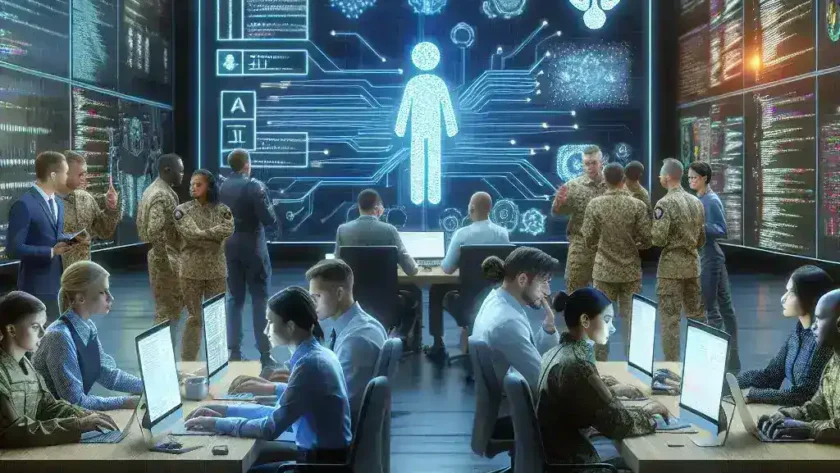Introduction
The landscape of warfare and national security is undergoing a seismic shift, driven by the integration of Artificial Intelligence (AI). In recent years, collaboration between tech firms and the Pentagon has intensified, marking a significant turning point in how military operations are conducted. This article delves into the nuances of this collaboration, exploring its historical context, current developments, and future implications.
The Historical Context of Tech and Military Collaboration
The relationship between technology and military operations is not new. Historically, innovations such as radar, GPS, and even the internet have their roots in military research and development. However, the current wave of AI integration represents a unique paradigm shift, where private tech companies are becoming crucial partners in defense strategy.
Early Developments in Military AI
In the early days of AI, military applications were often limited to simulations and logistical support. However, as AI technology advanced, its potential for real-time decision-making in combat scenarios became evident. The Pentagon began investing heavily in AI research in the late 2010s, creating initiatives like the Defense Innovation Unit (DIU) to facilitate partnerships with private-sector companies.
Current Collaborations: Who’s Involved?
Today, several leading tech firms are at the forefront of this collaboration. Companies like Google, Microsoft, and Palantir are now integral to the Pentagon’s AI strategy. These firms bring not just technological expertise, but also a culture of innovation that is vital for adapting military operations to modern threats.
Google’s Involvement
Google has been involved in several AI projects for the military, notably Project Maven, which aimed to use AI for drone surveillance. Although this project faced internal backlash regarding ethical concerns, it highlighted the potential for AI to enhance military operations.
Microsoft’s Azure Cloud for Defense
Microsoft has secured contracts with the Pentagon to provide cloud computing services, enabling the military to leverage AI for data analysis and real-time decision-making. The Azure cloud platform is pivotal in storing and processing vast amounts of data, essential for AI applications.
Palantir’s Data Analysis Solutions
Palantir Technologies provides advanced data analytics solutions that help military leaders make more informed decisions. Their software can analyze complex data sets to identify patterns and insights, significantly enhancing situational awareness in combat.
Implications of Increased Collaboration
The intensifying collaboration between tech firms and the Pentagon brings both opportunities and challenges. Understanding these implications is vital for assessing the future of military operations.
Pros of Tech-Military Collaboration
- Enhanced Efficiency: AI can process information faster than humans, allowing for quicker decision-making in critical situations.
- Improved Accuracy: AI algorithms can analyze data with high precision, reducing the likelihood of human error.
- Cost-Effective Solutions: Partnering with tech firms can lead to innovative, cost-effective solutions that enhance operational capabilities.
- Proactive Threat Mitigation: AI can predict potential threats based on historical data, enabling preemptive action.
Cons of Tech-Military Collaboration
- Ethical Concerns: The use of AI in warfare raises significant ethical questions, particularly regarding autonomous weapons.
- Dependence on Technology: Increased reliance on AI could lead to vulnerabilities if systems are hacked or fail.
- Job Displacement: Automation could lead to a reduction in traditional military roles, impacting employment.
Future Predictions: Where Are We Headed?
As AI technology continues to evolve, the collaboration between tech firms and the Pentagon is likely to deepen. Experts predict several trends that could shape the future of military applications of AI.
Increased Investment in Cyber Defense
With the rise of cyber threats, there will be a greater emphasis on developing AI solutions for cybersecurity. Tech firms will play a crucial role in creating systems that can detect and mitigate cyber threats in real-time.
Development of Autonomous Systems
The future may see a rise in autonomous military systems, such as drones and robots that can operate independently. This shift raises complex ethical and operational questions that will need to be addressed.
Greater Collaboration with International Partners
As military technology becomes increasingly sophisticated, global collaboration will be essential. The Pentagon may seek partnerships with foreign tech firms and governments to bolster its AI capabilities.
Conclusion
The collaboration between tech firms and the Pentagon on AI is not just a trend; it represents a fundamental change in how military operations are conducted. As this relationship continues to evolve, it will undoubtedly raise important questions about ethics, effectiveness, and the future of warfare. The integration of AI into defense strategies promises to reshape the battlefield landscape, making it imperative for stakeholders to navigate these changes responsibly.

